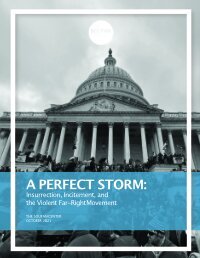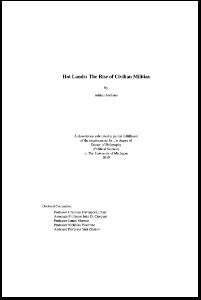By Brady: United Against Gun Violence.
In January 2020, Brady advocates planned to take part in an annual Martin Luther King Jr. gun violence prevention advocacy event at the Virginia State Capitol, but state officials cautioned would-be participants that 2020 would be different: Second Amendment extremists were planning to turn out. Out of caution, Brady cancelled its official participation in the event because an estimated 20,000 individuals from across the country, armed with assault-style rifles and wearing tactical gear, descended on the State Capitol in Richmond, VA. It was a deeply troubling moment for members of the gun violence prevention movement, who saw their First Amendment right to speak and assemble quashed by gun-toting extremists. We did not know then that the events of that day were only a dress rehearsal for far worse to come. On January 6, 2021, Congress was set to certify the results of the 2020 election. But extremists, many of them armed, mounted an insurrection with violent force that resulted in death and injury and nearly derailed Congress’ capacity to confirm a president duly elected by the citizens of the United States. For Brady supporters and gun violence prevention advocates, it was both a sickening gut punch and deja vu. Although only one of the four people killed on January 6 was shot, the 2021 attack had the same roots as the 2020 Virginia State Capitol unrest: Second Amendment extremism. Second Amendment extremism arises from what’s commonly known as the “insurrectionist” construction of the Second Amendment: a false interpretation fomented by extremists, marketed by the gun lobby, and adopted by some mainstream politicians, including the 45th President of the United States. Second Amendment extremism lays the foundation for much domestic unrest and weaponized terror throughout American history, including but not limited to the Oklahoma City Bombing, the armed agitation at the Michigan State Capitol, and yes — January 6, 2021. Indeed, investigations and firsthand accounts of January 6 show that many of its agitators were armed, ready, and willing to harm lawmakers. Accordingly, officers on duty at the U.S. Capitol that day had credible reasons to fear that many rioters were armed; a number of these officers have since testified before Congress that those fears hindered their ability to control the insurrectionist mob. Yet the common narrative around January 6 often omits the role of Second Amendment extremism. Ignoring the ways in which guns, and gun mythology, fuel domestic extremism in America has been — and will continue to be — a deadly error. For these reasons, this report sets out to examine the role U.S. gun culture and policy played in laying the foundation for January 6. If we do not spend time reflecting upon our past, we are doomed to repeat it — and that we cannot do, because human lives and bedrock civic principles hang in the balance of this understanding and reckoning. At Brady, we have confronted extremism before, and we know that unless we take action, we will face it again.
Washington, DC: Brady: United Against Gun Violence. 2022. 16p.





















